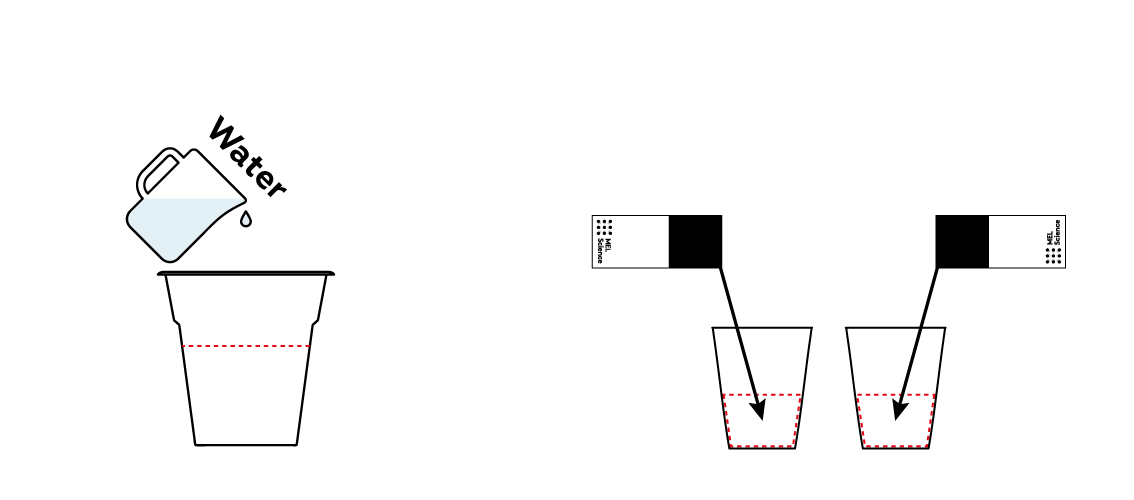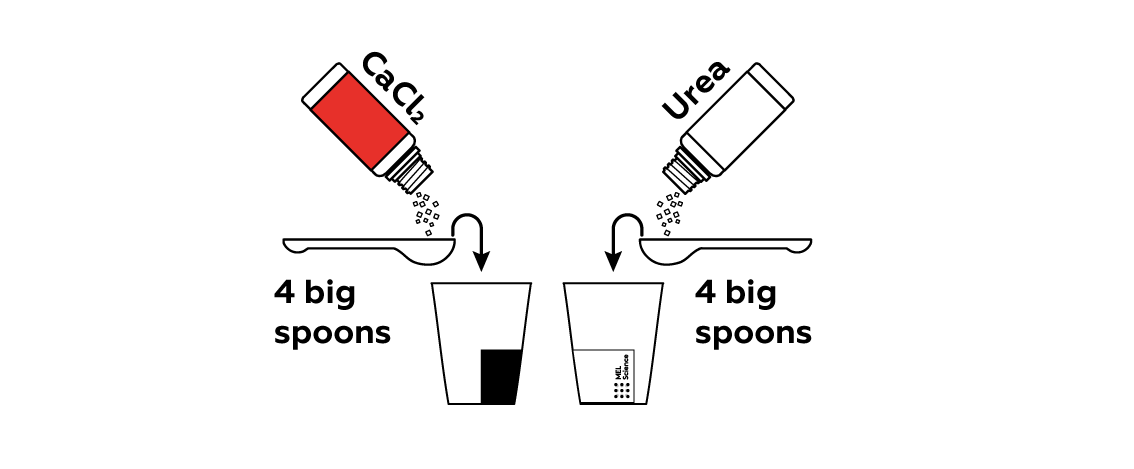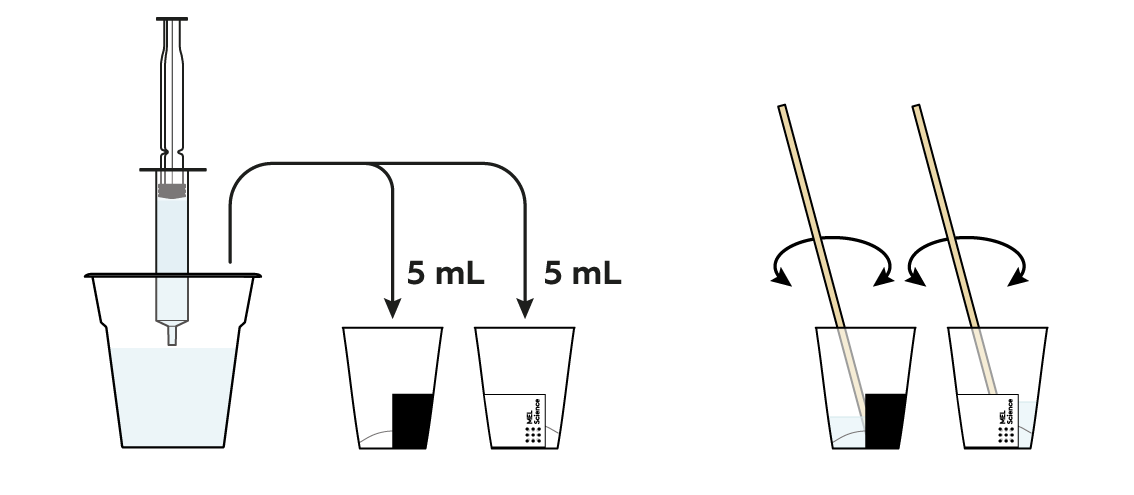Thermal effects
What are endothermic and exothermic reactions?

Reagents
Safety
- Put on protective gloves and eyewear.
- Conduct the experiment on the protective underlay.
- Do not allow chemicals to come into contact with the eyes or mouth.
- Keep young children, animals and those not wearing eye protection away from the experimental area.
- Store this experimental set out of reach of children under 12 years of age.
- Clean all equipment after use.
- Make sure that all containers are fully closed and properly stored after use.
- Ensure that all empty containers are disposed of properly.
- Do not use any equipment which has not been supplied with the set or recommended in the instructions for use.
- Do not replace foodstuffs in original container. Dispose of immediately.
- In case of eye contact: Wash out eye with plenty of water, holding eye open if necessary. Seek immediate medical advice.
- If swallowed: Wash out mouth with water, drink some fresh water. Do not induce vomiting. Seek immediate medical advice.
- In case of inhalation: Remove person to fresh air.
- In case of skin contact and burns: Wash affected area with plenty of water for at least 10 minutes.
- In case of doubt, seek medical advice without delay. Take the chemical and its container with you.
- In case of injury always seek medical advice.
- The incorrect use of chemicals can cause injury and damage to health. Only carry out those experiments which are listed in the instructions.
- This experimental set is for use only by children over 12 years.
- Because children’s abilities vary so much, even within age groups, supervising adults should exercise discretion as to which experiments are suitable and safe for them. The instructions should enable supervisors to assess any experiment to establish its suitability for a particular child.
- The supervising adult should discuss the warnings and safety information with the child or children before commencing the experiments. Particular attention should be paid to the safe handling of acids, alkalis and flammable liquids.
- The area surrounding the experiment should be kept clear of any obstructions and away from the storage of food. It should be well lit and ventilated and close to a water supply. A solid table with a heat resistant top should be provided
- Substances in non-reclosable packaging should be used up (completely) during the course of one experiment, i.e. after opening the package.
FAQ and troubleshooting
Make sure to use room-temperature water. If water is initially too cold or too hot, the temperature change may not be enough for the thermosticker to change colors. In addition, it is important to place the sticker at the bottom of the cup, as close to the solution as possible.
Make sure to add exactly as much water as shown in the instructions. If you fill the whole cup with water, it won't work. The same is true for the quantities of reagents.
Don’t worry! Just add water and see which of the two symbols appears on the thermosticker. Then repeat the experiment.
Step-by-step instructions
For this experiment, you need to prepare some room-temperature water and apply temperature indicators to your experiment vessels.

Now add two different substances to your vessels. One is calcium chloride CaCl2—a substance similar to table salt NaCl, but with calcium Ca instead of sodium Na. The other is urea—a pretty simple organic compound.

The second ingredient you need to add to both vessels is plain old water. The process occurring in both vessels is the same: the granules simply dissolve in the water, just as sugar or table salt would.

The process is the same, but one cup cooled down significantly, while the other heated up. How come?

Disposal
Dispose of solid waste together with household garbage. Pour solutions down the sink. Wash with an excess of water.
Scientific description
When a match burns, the reaction between the wood and the oxygen in the air produces heat 
to turn the water into vapor. In fact, virtually any process in chemistry either requires or produces some heat. A reaction that uses heat is called an endothermic reaction, while one that releases heat is known as an exothermic reaction.
The process of dissolution, as it turns out, is no exception. However, the effect can be very different depending on which substances are being dissolved. The dissolution of urea needs some energy, and it's keen to pull heat from its environment , making its surroundings cooler. The dissolution of calcium chloride, on the other hand, produces heat

Many substances, like sugar or table salt, change the temperature of their surroundings only slightly, likely unnoticeably, when you dissolve them. But if the effect is dramatic enough, it can be quite useful. For example, the thermal effect of urea’s dissolution is employed in some instant ice packs, which can be used as first aid to treat sports injuries. And the heat from dissolving calcium chloride is the key to how some self-heating food packs work.